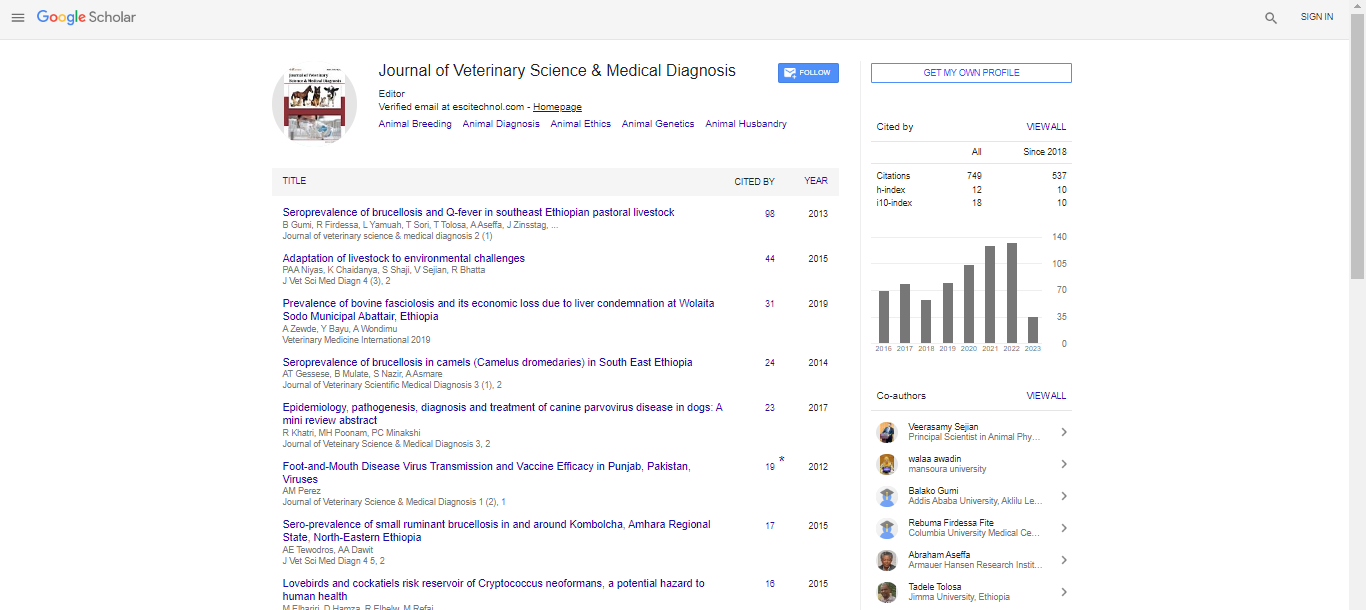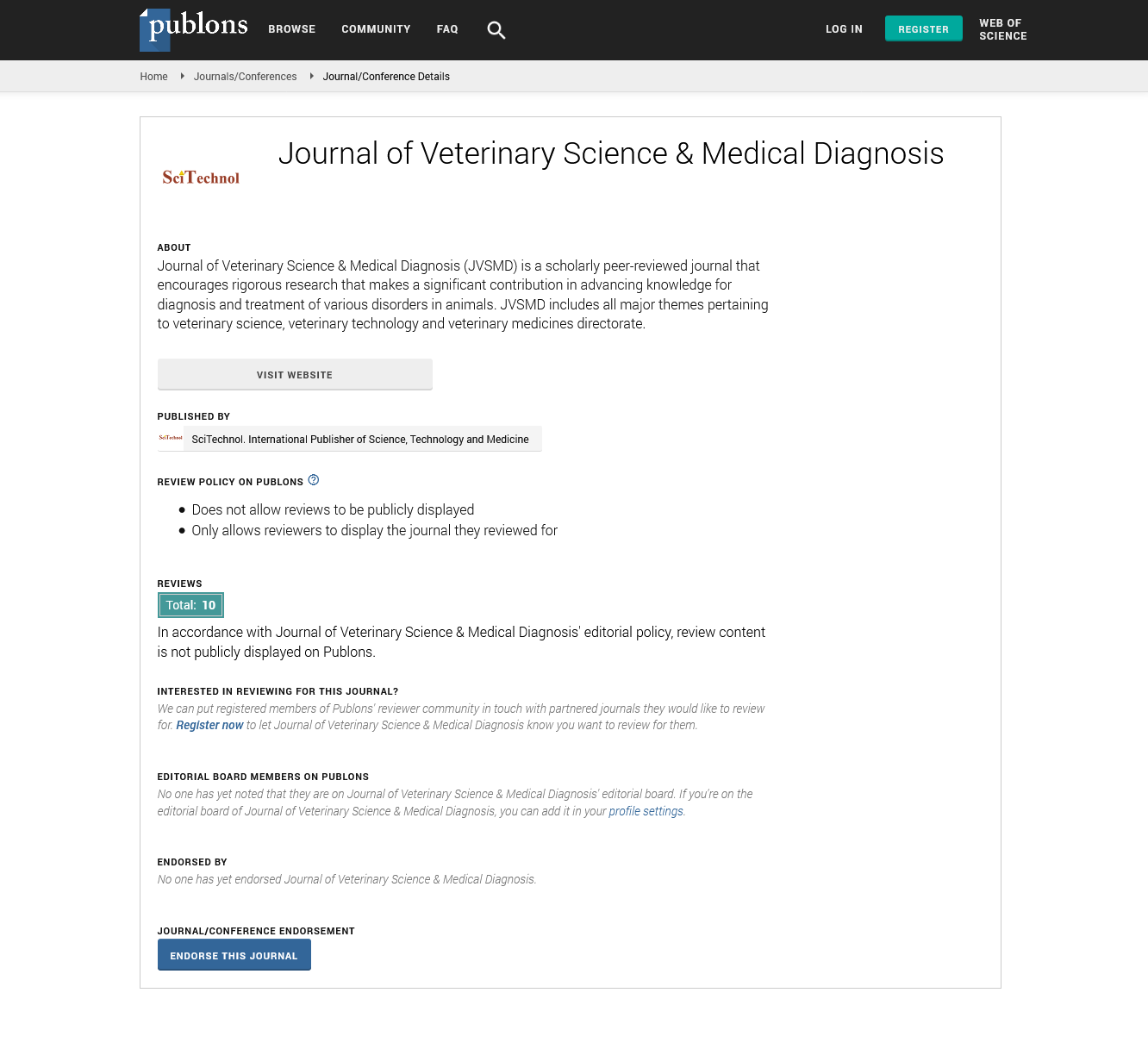Perspective, J Vet Sci Med Diagn Vol: 12 Issue: 4
Preserving Biodiversity through Animal Welfare
Carla Richards*
1Department of Veterinary Sciences, Murdoch University, Western Australia, Australia
*Corresponding Author: Carla Richards,
Department of Veterinary Sciences,
Murdoch University, Western Australia, Australia
E-mail: carl@ricvtd.au
Received date: 27 Jun, 2023, Manuscript No. JVSMD-23-111849;
Editor assigned date: 30 Jun, 2023, Pre QC No. JVSMD-23-111849 (PQ);
Reviewed date: 14 Jul, 2023, QC No. JVSMD-23-111849;
Revised date: 21 Jul, 2023, Manuscript No: JVSMD-23-111849 (R);
Published date: 28 Jul, 2023, DOI: 10.35248/2325-9590.23.12.1000058
Citation: Richards C (2023) Preserving Biodiversity through Animal Welfare. J Vet Sci Med Diagn 12:4.
Description
Biodiversity is the intricate web of life on Earth. It encompasses the incredible variety of species, ecosystems, and genetic diversity that coexist and interact to create a balanced and harmonious environment. However, the balance is currently under threat due to human activities that negatively impact both wildlife and their habitats. One effective approach to preserving biodiversity is through a strong emphasis on animal welfare. By prioritizing the well-being of individual animals and their habitats, we can contribute to the broader conservation efforts and ensure the sustainability of our planet for generations to come. Animal welfare refers to the ethical and humane treatment of animals, acknowledging their intrinsic value and right to a life free from unnecessary suffering. While it might seem distinct from biodiversity conservation at first glance, the two concepts are inherently interconnected. A thriving ecosystem focuses on the health and vitality of its constituent species, from the tiniest insects to the largest predators. Ensuring the welfare of animals is, therefore, essential for maintaining the complex interactions that sustain ecosystems.
One of the ways in which animal welfare promotes biodiversity conservation is by addressing the threats posed by invasive species.
Invasive species, often introduced by human activities, can outcompete native species, disrupt food chains, and alter entire ecosystems. By actively managing and controlling invasive species through ethical means, we can prevent their unchecked spread and preserve the balance of local biodiversity. Furthermore, animal welfare practices can play an essential role in protecting endangered species. Conservation programs that focus on safeguarding the welfare of individual animals can help boost their populations and aid in their recovery. Whether through habitat restoration, anti-poaching efforts, or controlled breeding programs, these initiatives directly contribute to the preservation of species that might otherwise face extinction. The recovery of species like the giant panda and the California condor exemplifies the positive impact of such measures.
Animal welfare also encompasses habitat preservation and restoration, which are essential for maintaining biodiversity. Many species depends up on specific habitats for their survival, and the degradation or destruction of these habitats directly threatens their well-being. By adopting responsible land management practices, protecting critical habitats, and restoring degraded areas can create safe environment for various species and support the intricate relationships between them. An important aspect of preserving biodiversity through animal welfare is raising public awareness and fostering a sense of stewardship. When people are educated about the value of diverse ecosystems and the importance of individual animals within them, they are more likely to support conservation efforts. Advocacy for animal welfare encourages individuals to make changes that minimize their impact on the environment and its inhabitants, from reducing plastic waste to supporting sustainable agriculture.
It's important to note that preserving biodiversity through animal welfare isn't without its challenges. Balancing the needs of wildlife with human activities and development can be complex. Nonetheless, finding innovative solutions that prioritize both is essential for longterm success. Only through collective efforts, driven by a sense of responsibility and compassion, can helps to preserve the biodiversity of life.
 Spanish
Spanish  Chinese
Chinese  Russian
Russian  German
German  French
French  Japanese
Japanese  Portuguese
Portuguese  Hindi
Hindi 
